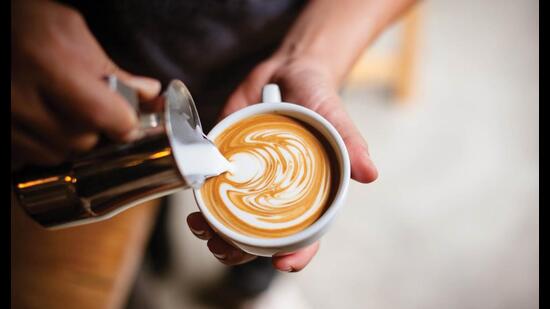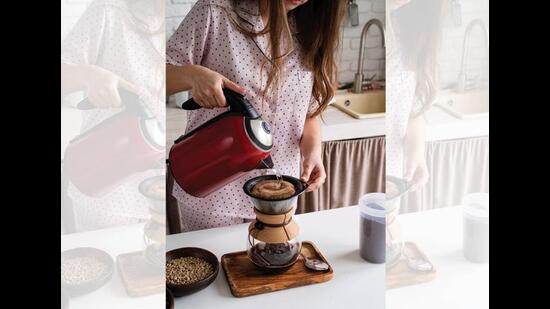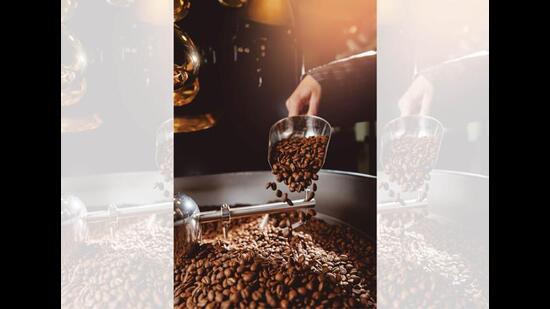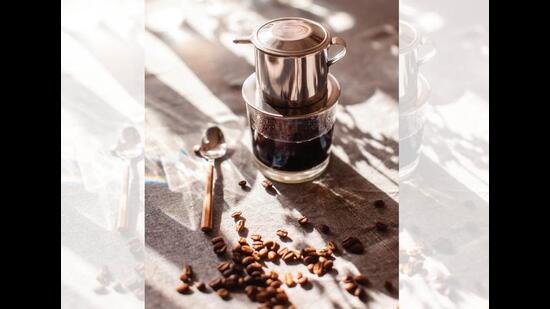
Daily grinds: How to make or order the perfect cup of coffee, every time
2 months ago | 35 Views
Ah, coffee. The stuff that fuels first dates, morning rituals, work meetings, breaks from work meetings, hipster conversations. It’s the smell of potential, the taste of happiness and *record scratch* and why doesn’t the coffee we make at home taste the same as in cafés? Why are beans so complicated? Why can you go wrong even with an expensive order? We asked some experts for help.
First, pick a side. Team Robusta or Team Arabica? Robusta has more caffeine than Arabica, it’s also more bitter, says Siddhant Devan of Devan’s, a 62-year-old coffee roasting company in New Delhi. Purists consider Arabica the superior bean. The higher elevations it grows in (between 3,000 - 6,000 feet), have warm days and cool nights. This gives the cherries – and the beans inside them – more time to develop and build a more refined flavour.

Test for taste. Most good coffee companies sell single-bean and blend versions of their coffees. Single-origin coffee comes from a single producer, crop, and region. That means no two single blends will taste the same. Kenyan coffees are known for being fruity; Ethiopian coffee is famous for its floral flavours. “In India, coffee plantations in India are usually peppered with spice and fruit crops like pepper, cardamom, vanilla, orange and banana,” explains Nishant Sinha, founder of the seven-year-old Roastery Coffee House chain. So, citrus, floral or spicy flavours can be inherent, depending on where the coffee was grown. “Coffee blends, on the other hand, combine coffee from different origins to create new flavours; and are best used in coffees with milk.”
The single life. A bean that’s traceable up to a region is single-origin. If we know the exact estate it came from, it’s a step up: Single-estate. To infuse flavour, single-origin beans are often fermented along with fruits such as sherry or pineapple. “This is part of the next-level of producing single-origin coffee,” says Sinha. “These are called microlots – limited batches of high-quality coffee that are carefully fermented and processed.” They’re the best a farmer can offer, and sometimes come from just one patch of land.

Get roasted. When beans meet high temperatures, they release different levels of acidity and flavour. A light roast has no oil on the surface of the beans and is bold, fruity and floral – the most familiar coffee taste. A dark roast means the beans were heated longer, and are more caramelised, smoky and bitter. “Medium roasts retain the flavour of the bean, but also offer a decent kick of acidity and no bitterness,” Sinha says. Try out different combinations and settle for what feels right, not what everyone else seems to love.
Level up. There are probably 100 different ways you could enjoy your cup of coffee. Vietnamese coffee uses medium and dark beans, and the pour-over method – hot water over coffee grounds over condensed milk. Turkish coffee uses very finely ground Arabica beans and the grounds are left in the coffee when served. Can’t linger over a cup? Get espresso. Want to show off? Get Mazagran, a cold coffee with lemon juice, ice and sugar, that originated in Algeria. Some version even use rum.
Stay grounded. “Coffee that is freshly ground is the most flavourful,” says Devan. If you don’t have a grinder at home, and you’re buying ground coffee from the store, consume it within two weeks of opening. This isn’t the same as instant coffee. “Instant coffee is basically stuff that’s been brewed, dehydrated and needs to be dissolved in water or milk.” Most brands make it with cheap coffee and chicory, the root of a bitter plant, to keep costs low. That’s why it never tastes like the coffee at a specialty café.

Assemble allies. Before splurging on a complicated coffee machine, start simple. Devan recommends Moka pots for those who like espresso or milky coffee; and pour-overs or a French Press for people who prefer strong black coffee. A French Press lets coffee grounds steep in hot water for a while, which produces a more robust cup. “The South Indian coffee maker/tumbler is also a great way to enjoy coffee with milk and is the cheapest way to get started,” he says. There’s no single best way to make coffee, but there are best moves, says Devan. “Use freshly ground beans, store coffee in an airtight container, do not boil the water – turn off the heat just before boiling. And never reheat coffee.”
Why cafés do it better
“They use specialised grinding and brewing techniques and equipment, measure with utmost precision, use specific water filtration systems, seal unused beans in special vacuum conditions, and have a long list of other checks. Ordinary people don’t always have the right tools and knowledge to make the perfect cup.” — Apoorv Agarwal, founder, The Simple Brew.
Read Also: best study desk: choose from the top 9 recommendations for comfort and stylish designs
#




















